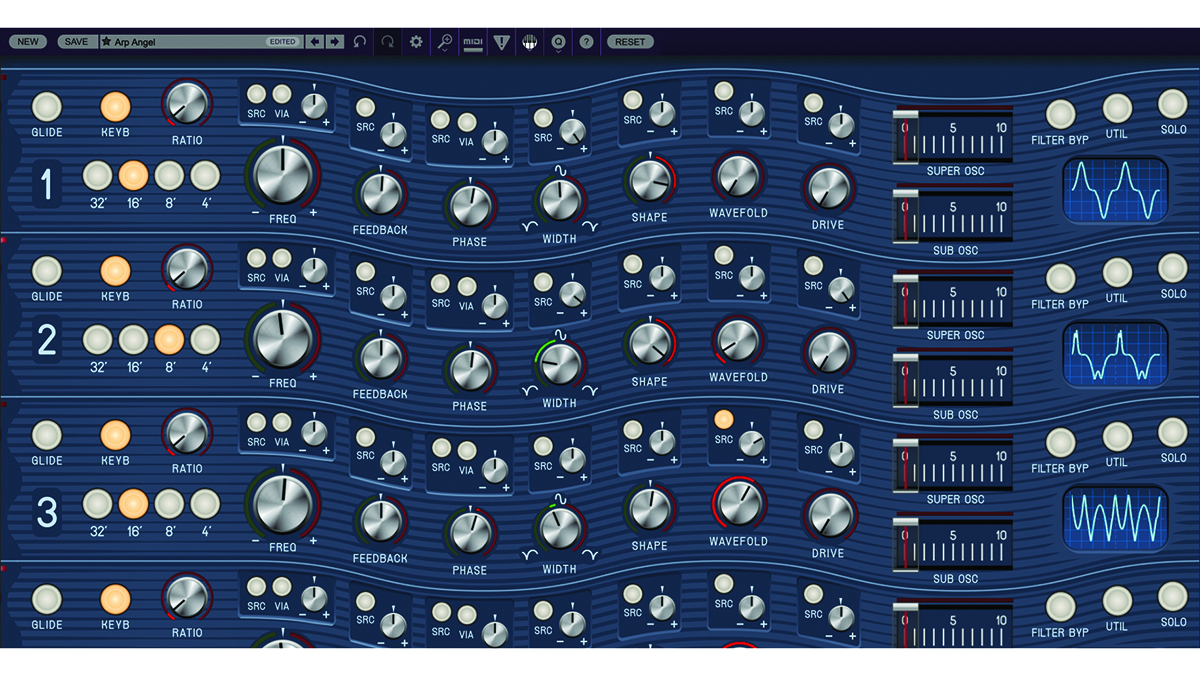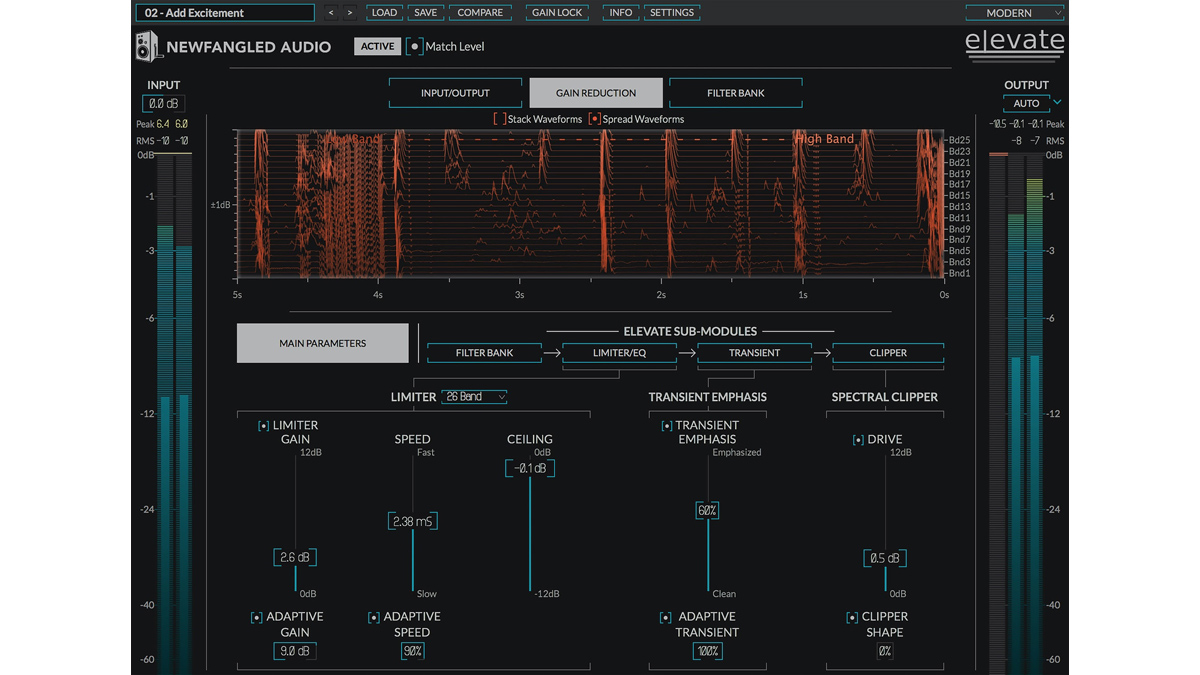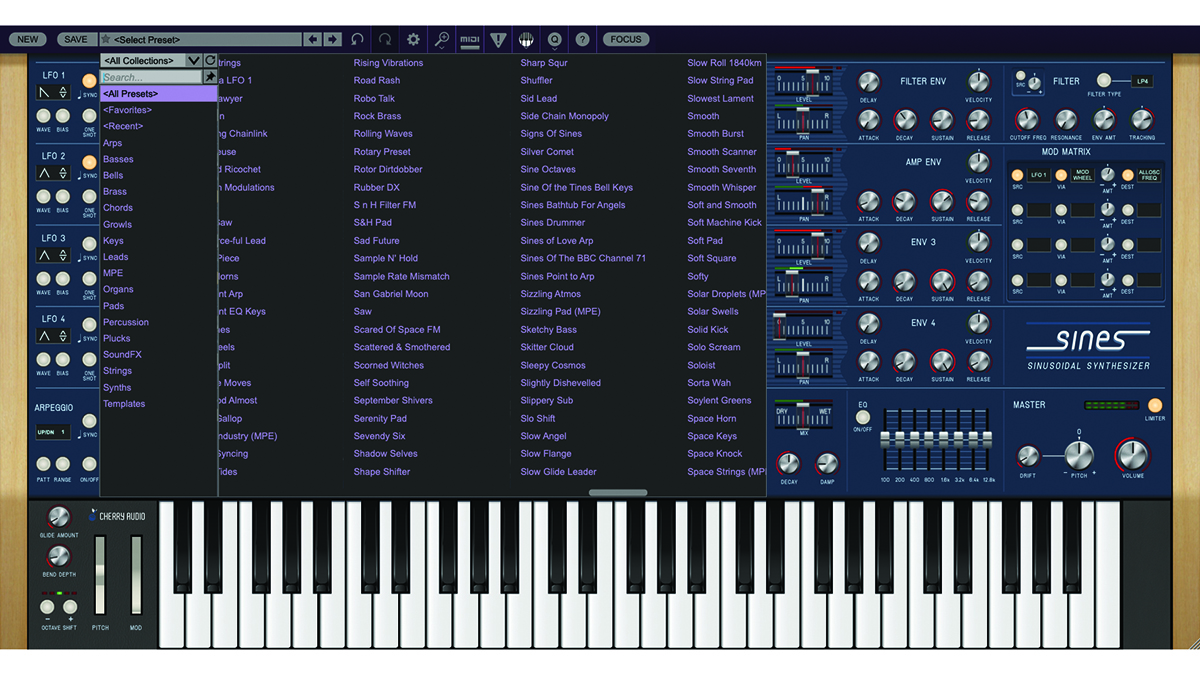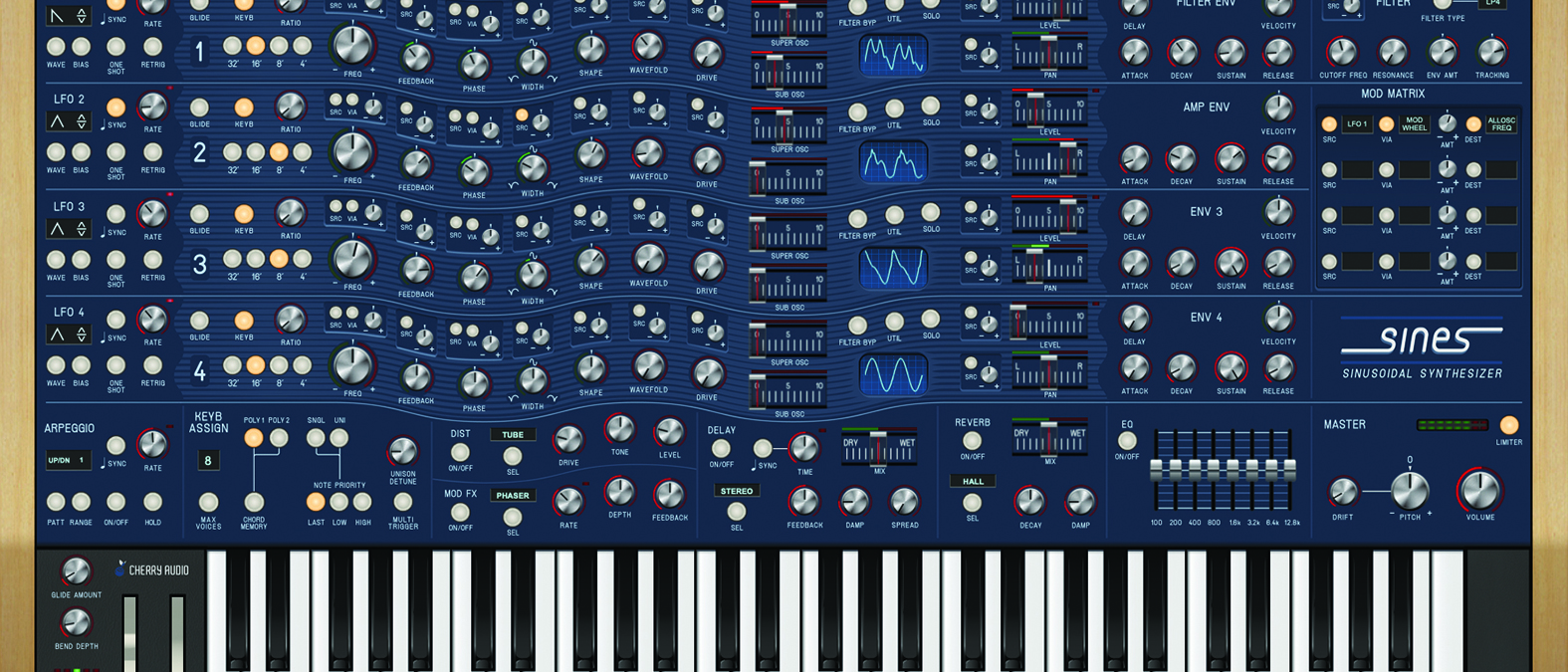MusicRadar Verdict
Don’t be misled by the name, Sines is capable of waveform complexity way beyond many other trusted subtractive favourites, with an ease of editing that invites true creativity.
Pros
- +
Sonically alluring synthesizer.
- +
Beautiful GUI which is a joy to use.
- +
Plentiful bounty of presets.
Cons
- -
None that we can think of, for this price!
MusicRadar's got your back
Cherry Audio Sines: What is it?
Finding new and tempting ways to keep us synth-heads entertained is becoming an ever-increasing challenge, so it’s always refreshing to see a synth with a new take on older and familiar concepts.
If a clue is in a name, then Sines only really tells some of the story. At the mere mention of a synthesizer with four oscillators, all of which emit Sine waves, you’d be forgiven for conjuring up visions of Yamaha-style FM synthesizers. This is part of the Sines story, but it only represents a small proportion of its capability.
The Sines interface is utterly exemplary; signal flow is relatively obvious, with an ease of modulation routing which is refreshing, alongside the immediacy and ability to apply on-board parameters to MIDI CCs or hardware. The synth window is resizeable, making it a total joy to use on a large screen, however, the Focus mode will pacify any user of smaller laptop-sized screens, allowing upscaling of complete areas of the panel.

Cherry Audio Sines: Performance and verdict
The Sines signal path begins with one of four oscillators, which emit pure sine waves by default. This is confirmed by a small oscillator window, which resides at the oscillator level. Each oscillator has an independent level and pan control, both of which may be placed under modulation control.
The main sonic event takes place at the oscillator’s heart, with the presence of a multitude of expansive functions which will turn your plain old sine into something far richer in a harmonic state. By applying feedback, and changing the phase, width or shape of the sine, you can create rich and substantial oscillator shapes and textures, which then head filter-bound, in a traditional and familiar subtractive style.
The filter is impressive and powerful, with full ADSR envelope control for creating harsh and resonant attacks and sweeps. Through a drop-down menu, you can switch filter modes to different low-pass styles, as well as high, band and notch-pass filters.

• Spectrasonics Omnisphere 2
One of the industry legends. Pricey, but highly capable and desirable.
• Korg Mono/Poly V2
One of the original four-oscillator wonders, this software version goes far beyond the original.
The vast majority of Sine’s controls feature a small Source button, right next door, which allows the routing of modulation with minimum fuss. The sources themselves include four envelopes and LFOs alongside performance elements, but modulation is also available from the main oscillators too.
Want all the hottest music and gear news, reviews, deals, features and more, direct to your inbox? Sign up here.
This is where we delve into the realm of FM synthesis; increasing the volume of the first oscillator, while only using the remaining three oscillators as modulation sources, introduces all of those familiar FM tones, from clean and sharp tine pianos to gnarly and distorted waves. It makes you think how amazing the original DX7 might have been had all of the parameters been on display like they are in Sines.
Part of the beauty of this concept is the notion that you can easily flit from subtractive to FM styles of working, and that also extends to using Sines as an Additive tone generator. Like many other four-oscillator synths before, the flexibility of having this number of oscillators, which may be hard-tuned, creates a substantial number of possibilities, particularly if you employ modulation to further build or decline the overall harmonic content.

Backend output
Sines offers a tremendous amount of performance possibilities, not least of all thanks to its additional operation in a standalone mode. The onboard arpeggiator is one of the more traditional varieties, while all of the aforementioned modulation options may be assigned to performance controls, which include the implementation of aftertouch.
There are also considerable backend effects on offer, from five different levels of distortion, and modulation effects such as phaser and chorus, along with delay and reverb, all available simultaneously and with their own set of controls.
Finally, a graphic/fixed-band EQ heads to the Master output, where a limiter will keep extreme volumes under control. As a final pseudo-analogue flourish, the drift control will subtly alter the oscillator tuning, which can affect the overall tonal perception, as much as alter the behaviour of FM modulation. As a sum of parts, Sines adds up to far more than its sinusoidal waveform would have you believe!
I saw the sine
To say that Cherry Audio has been on a roll lately is a considerable understatement. Sines occupies a space in their product line which is relatively unique, as it provides plenty of diversification when compared to Cherry Audio’s fair share of modelled vintage stalwarts.
Sines is a sonically impressive and completely immersive instrument, which invites a level of programming which is as easy as it is a delight to use.
MusicRadar verdict: Don’t be misled by the name, Sines is capable of waveform complexity way beyond many other trusted subtractive favourites, with an ease of editing that invites true creativity.
Cherry Audio Sines: The web says
"For the low price, you get a whole lot of synth that sounds beautiful and is almost infinitely flexible."
MusicTech
Cherry Audio Sines: Hands-on demos
Cherry Audio
Starsky Carr
Audio Tech TV
musictrackjp
Cherry Audio Sines: Specifications
- macOS 10.13 or above. macOS 13 Ventura supported. 64-bit required. Native Apple M1 processor support, including Apple M1 Ultra. 3.4 GHz Quad-Core or M1 CPU with 8GB of RAM recommended.
- Windows 7 or above (including Windows 11), 64-bit required. 3.4 GHz Quad-Core computer with 8GB of RAM recommended.
- Available in AU, VST, VST3, AAX, and standalone formats.
- A free 30-day demo of Sines is available. This demo will play white noise periodically, but is otherwise unlimited.
- CONTACT: Cherry Audio
Computer Music magazine is the world’s best selling publication dedicated solely to making great music with your Mac or PC computer. Each issue it brings its lucky readers the best in cutting-edge tutorials, need-to-know, expert software reviews and even all the tools you actually need to make great music today, courtesy of our legendary CM Plugin Suite.

